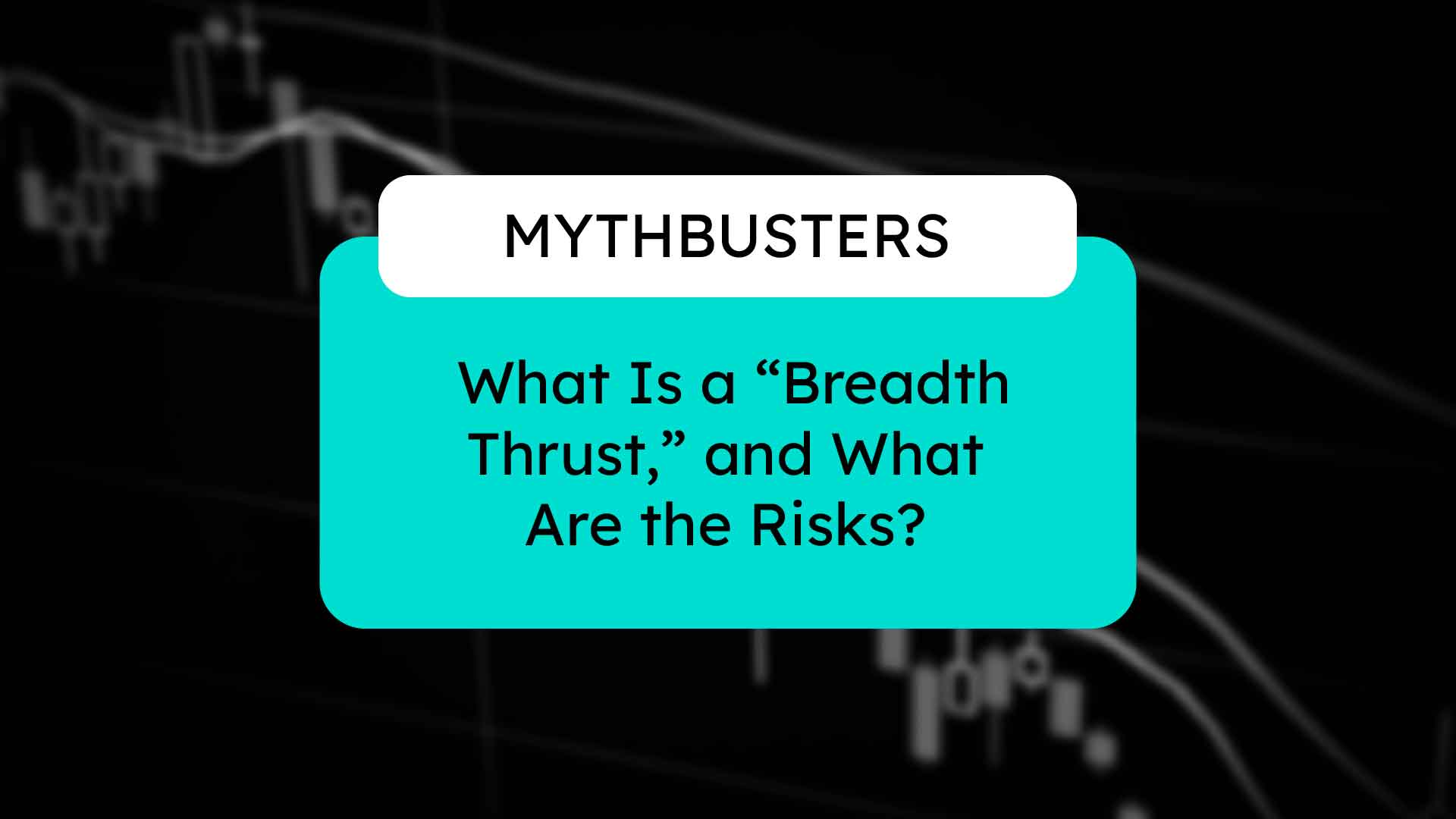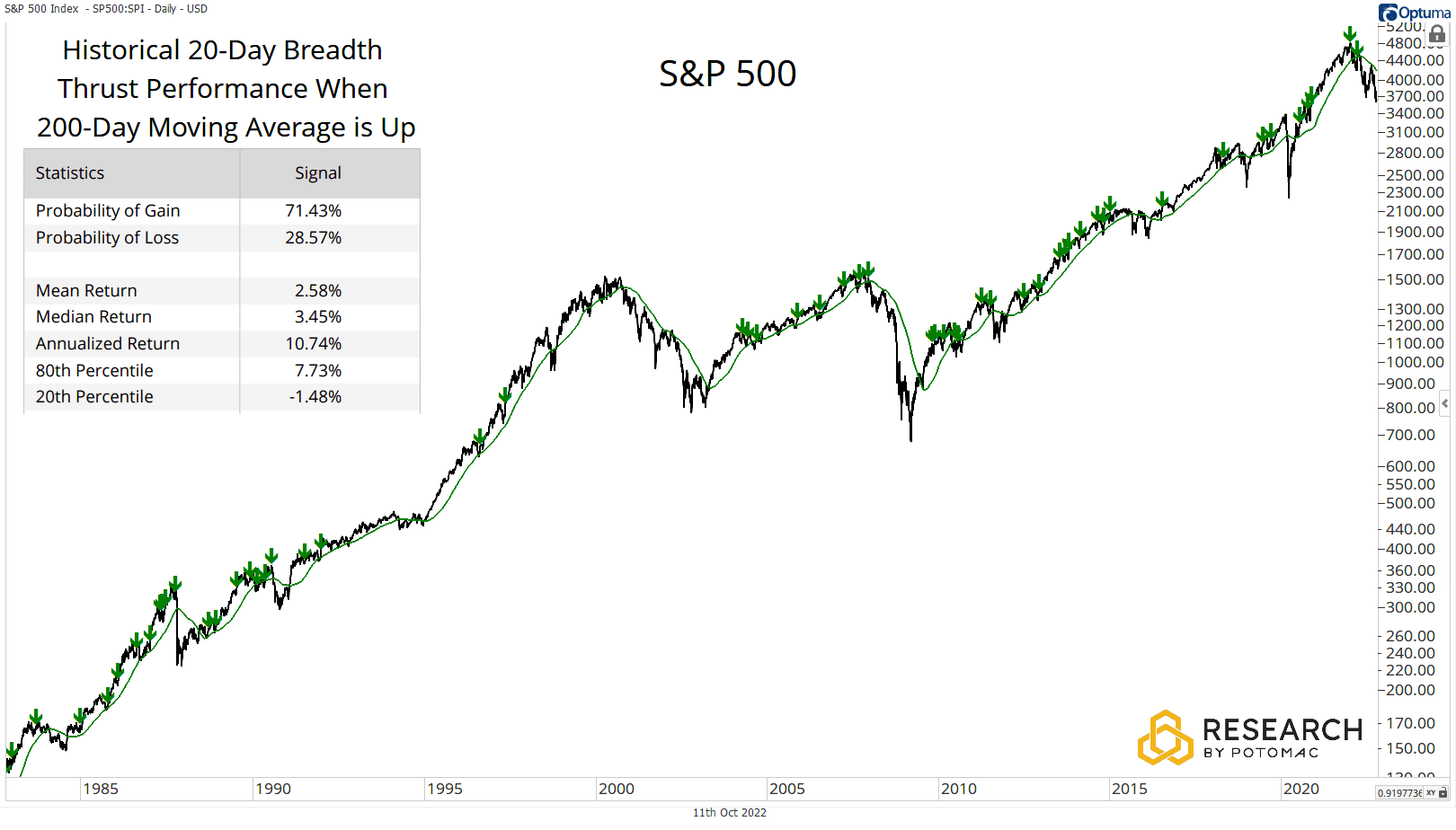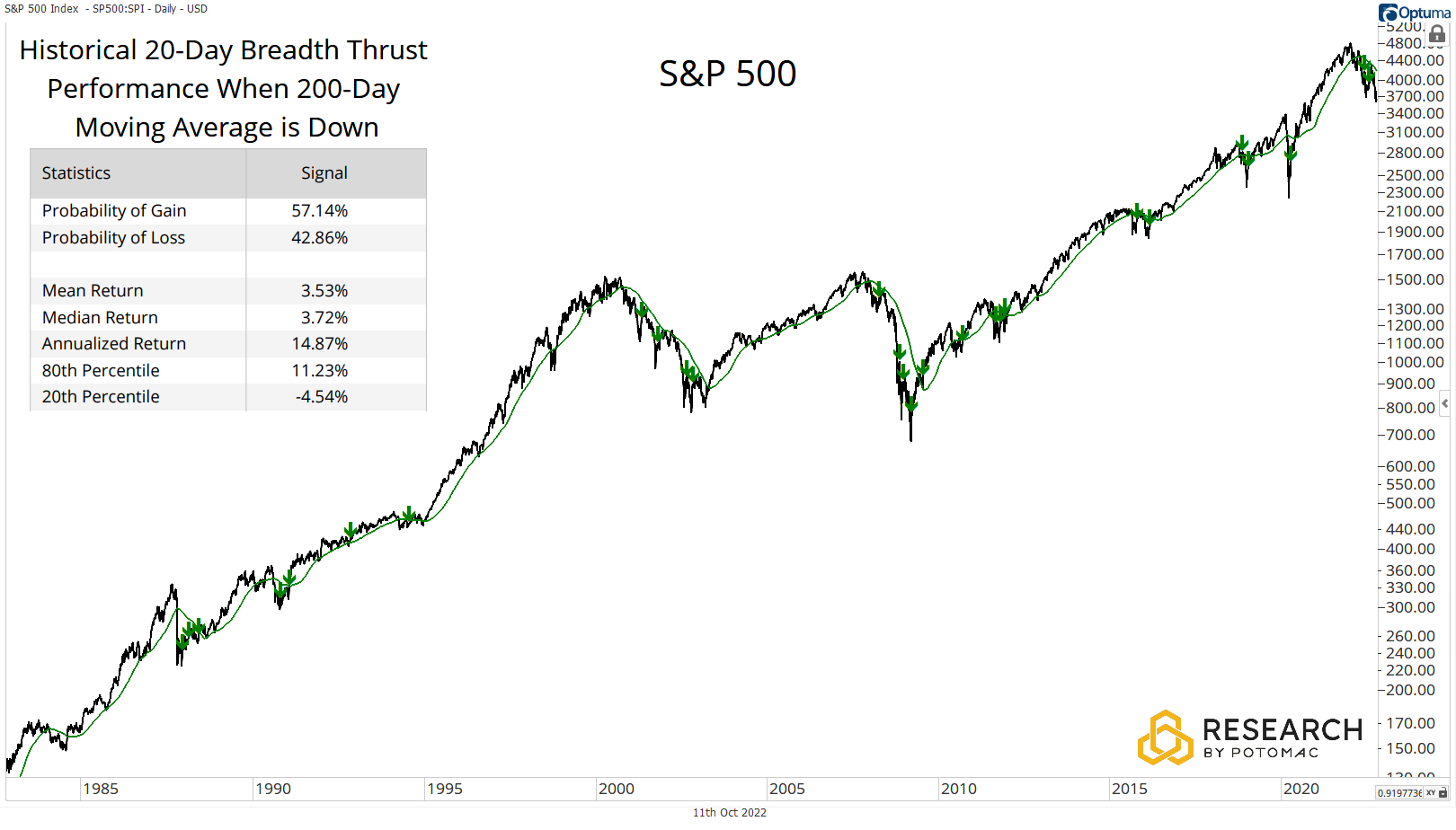
The Technical Analysis community has a nearly endless number of loose definitions for what specifically constitutes a “Breadth Thrust.” While Technicians almost universally understand this term, it might confuse many investors about what this development is and how it can be utilized. To start, we need to go over what we mean by “breadth” before we dive into the Breadth Thrust development.
Put simply, “breadth” is either the number or percentage of index components or basket of assets per the user’s choice that are meet some type of specified criteria. For example, a commonly quoted breadth metric for the S&P 500 is the percentage of stocks trading above their 200-day moving average. It’s important to note that while the definition of breadth itself is quite specific, many financial news pundits will often refer to breadth as simply good or bad without providing any real context on what is measured.
“Breadth Thrusts” are technical developments whereby a certain number or percentage of index components or assets move from one reading to another (usually two opposite extremes) within a specified period. Notice that the operative descriptor here is “within a specified time period.” While many market technicians in the past have their own namesake breadth thrust indicators specifically defined in both conditions in the timeframe, investors can utilize any number of criteria to create their own thrust indicator to suit their preferred timeframe and risk tolerance.
Before diving into the test results, first, we must provide some context around market breadth. As an example, generally speaking, very high readings such as 80%, 90%+ above a moving average are often interpreted by investors as bullish. Paradoxically, very low readings such as 20% and 10% are often interpreted as “so bad; it’s good,” or a “washout” condition. However, these readings are often little more than data points when not presented in both historical context and the direction of the prevailing trend.
Historically, how has the market behaved when a breadth thrust has occurred? What happens if a breadth thrust occurs when the prevailing market trend is down? Or when the prevailing market trend is up? Utilizing specialized software, these are all valid questions that we can provide some degree of historical context around.
We will be looking at the S&P 500 as the universe. The conditions will be defined as the percentage of components in the S&P 500 that are trading above their 20-day (one-month) moving average. The “thrust” will be defined as readings moving from below the 20% mark to above the 80% mark within one month of trading. The primary market trend will be determined by whether the 200-day moving average of the index has a higher or lower value than the prior trading day—a higher value defines an uptrend, while a lower value describes a downtrend.
S&P 500 – 20 Day Breadth Thrust
For the S&P 500, there were 85 instances since 1982 where the percentage of S&P 500 components trading above their 20-day moving average moved from below 20% to above 80% within one month of trading for a median gain in the S&P 500 of 3.45%, with a 66.67%-win rate over the following quarter. Note that returns at the 20th percentile are coming in at a modest loss of -2.46%. It’s worth noting that median gains in the index have tended to peak 61 trading days out at 3.86% on an improved 70.24%-win rate over the following quarter. The green arrows in the chart represent the 20-day breadth occurrences; note that throughout various market cycles, breadth thrusts have occurred in both rising and declining markets.

*Data as of the close of business 10/10/22 via Optuma
S&P 500 – 20 Day Breadth Thrust in an Uptrend
There were 56 instances since 1982 where the percentage of S&P 500 components trading above their 20-day moving average moved from below 20% to above 80% within one month of trading while the S&P 500’s 200-day moving average was up for a median gain in the S&P 500 of 3.45% with a 71.43%-win rate over the following quarter. Note the 20th percentile returns coming in at a loss of -1.48%, the smallest 20th percentile loss of all three tests. It’s worth noting that median gains have tended to peak 59 trading days out at 3.91% on an improved 75.00%-win rate over the following quarter.

*Data as of the close of business 10/10/22 via Optuma
S&P 500 – 20 Day Breadth Thrust in a Downtrend
There were 29 instances since 1982 where the percentage of S&P 500 components trading above their 20-day moving average moved from below 20% to above 80% within one month of trading while the S&P 500’s 200-day moving average was down for a median gain in the S&P 500 of 3.72% with a 57.17%-win rate over the following quarter. Note the 20th percentile returns coming in at a loss of -4.54%, the deepest 20th percentile loss of all three tests. It’s worth noting that median gains have tended to peak 38 trading days out at 4.24% on an improved 79.31%-win rate.

*Data as of the close of business 10/10/22 via Optuma
Bringing It All Together
While many investors will point to the fact that a Breadth Thrust is often a carte blanche positive development, adjusting for the long-term trend has historically suggested otherwise. Note that when a 20-day breadth thrust has occurred in a downtrend, 20th percentile losses came in a -4.54% vs. -1.48% while in an uptrend, compared to -2.46% 20th percentile losses for all occurrences since 1982. Additionally, win rates for a 20-day breadth thrust in a downtrend were much lower at 57.14% vs. 71.43% in an uptrend, despite very similar median gains.
This is not to say that investors should never attempt to utilize a breadth thrust in a downtrend as a signal. In fact, the highest median gain across the three tests was a 20-day breadth thrust in a downtrend at 38 trading days post-signal for a median gain of 4.24%. Rather, this work is suggestive that not all breadth thrusts are created equal.
*Further work on this topic can be done on other breadth metrics, which may be more specific to the individual time frame of the investor.
Potomac Fund Management (“Company”) is an SEC-registered investment adviser. This information is prepared for general information only and should not be considered as individual investment advice nor as a solicitation to buy or offer to sell any securities. This material does not constitute any representation as to the suitability or appropriateness of any investment advisory program or security. Please visit our FULL DISCLOSURE page. The company does not make any representations or warranties as to the accuracy, timeliness, suitability, completeness, or relevance of any information prepared by any unaffiliated third party, whether linked to the Company website or incorporated herein, and takes no responsibility for any of this information. The views of the Company are subject to change and the Company is under no obligation to notify you of any changes. Different types of investments involve varying degrees of risk, and there can be no assurance that the future performance of any specific investment or investment strategy will be profitable or equal to any historical performance level.
